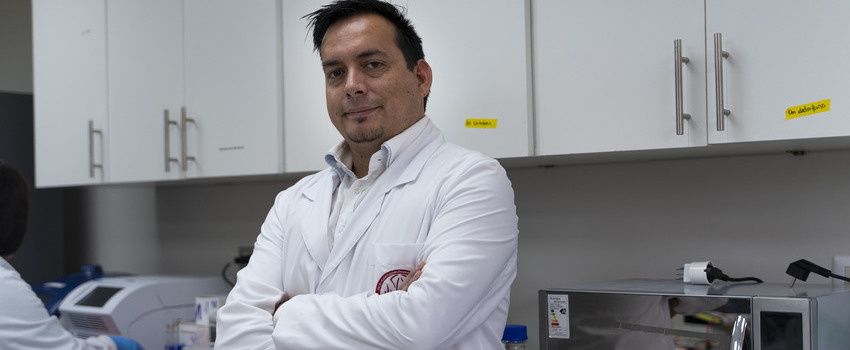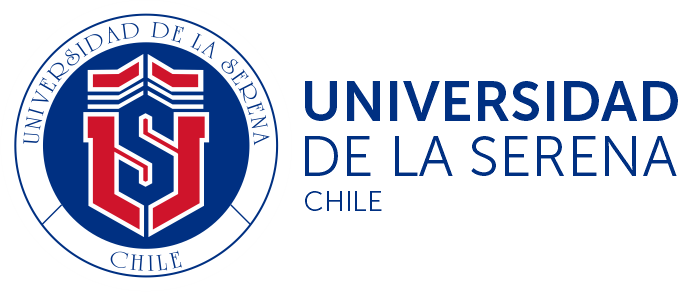- News
ULS researchers develop strategies to change the food industry: bioproducts and high-performance enzymes

Through random mutations, the aim is to improve enzymes and use them as a biotechnological tool in food production, among others.
There are currently an increasing number of industrial processes that are changing towards more sustainable and green practices. That is why researchers from the University of La Serena are developing a novel strategy for the genetic mutation of enzymes, which would allow the transformation of different molecules into foods, such as fats, proteins and carbohydrates, through less aggressive processes and conditions than those carried out with components chemicals.
Enzymes are specialized proteins capable of accelerating the speed of a chemical reaction, thus promoting the transformation (synthesis or degradation) of different molecules into specific products. Furthermore, the reduced volume of waste generated by its processes has allowed these biocatalysts to position themselves as predominant elements in various industrial sectors, such as food, detergents and cleaning.
Dr. Ronny Martínez, academic and researcher at the Department of Food Engineering at the ULS, details that enzymes are applied as biotechnological tools in many products of our daily routine, such as in the manufacture of foods such as bread, juices, milk without lactose, medications, detergents, where enzymes transform molecules at a microscopic level. Even so, many of the enzymes used have limitations due to their low resistance to high temperatures, solvents, or extreme pH.
“The research seeks to propose and submit to laboratory tests a new genetic mutation strategy that generates enzymes that allow the introduction of diversity in order to find new versions of that enzyme for applications that require its improvement. The better the enzymes at our disposal, the more processes we will be able to carry out enzymatically which, from an ecological point of view, are often better than traditional chemical processes and the working conditions and waste they currently produce. At an industrial level, carrying out an enzymatic reaction in water and at a moderate pH is much friendlier to the environment than carrying out a chemical reaction in organic solvents or in acidic or alkaline media,” said the researcher.
Martínez points out that, in nature, an enzyme has a specific function and that often corresponds to what is needed in the industrial or medical sector and can be used as a biological tool, only that the conditions in which this reaction is carried out can vary.
The premise of the research is to search for strategies to generate new enzymes, from a parental enzyme. that could be used in a number of things. By making random mutations in a laboratory, they can be altered into better versions for industrial processes.
Enzymes in general are made to function in an organism at a certain temperature. When you take it out of its natural environment and expose it to cold or heat, the enzyme is no longer in its optimal conditions and stops working, "so protein engineering does it." What it does is modify these enzymes so that they can meet the performance that one requires at the application level. To find a version that works in other scenarios, often non-natural, what is done is evolution in laboratories, exposing them to those conditions and selecting them among thousands of candidates that were generated through these mutations."
In the particular case of the research, part of the Fondecyt Regular 1170219 project, the academic states that the strategy is to eliminate certain parts of the enzyme in its structure and make random mutations in the resulting version, generating a strategy similar to directed evolution. , to see if it generates favorable changes. “With this you get thousands of variants, because the combinatorics is very large. If I have a protein of 100 amino acids, each of them can be replaced by the other 19 amino acids, therefore, systems must be developed that allow you to observe very quickly through microplates in the laboratory, to determine what type of change decreases or inactivates the activity of the enzyme, and which ones improve its activity, which are the rarest variants, but they must be found.”
The advantage, in the opinion of the researcher, is that “since it is a biological process, which is carried out mainly in water, the enzyme is a protein, the waste generated is biodegradable. Production is done biologically and getting rid of biomass, like a yeast extract, for example, is much easier than getting rid of thousands of liters of acid or toxic solvents. “That leads to a greener economy.”
An example of this is the production of glucose from starch. Starch has a very extensive process through acid and exposure to high pressure and temperature, to transform into glucose. "If you do it enzymatically, you can do it at room temperature, with a relatively neutral PH, which converts starch into glucose and at a much lower energy cost and less dangerous for operators." Every time we replace traditional chemical processes with enzymatic or biocatalytic processes, we are helping to make the processes more ecological, sustainable, and potentially of better quality, in the case of food.”
Written by Sergio Muñoz, Office of Dissemination and Dissemination of Science and Technology
